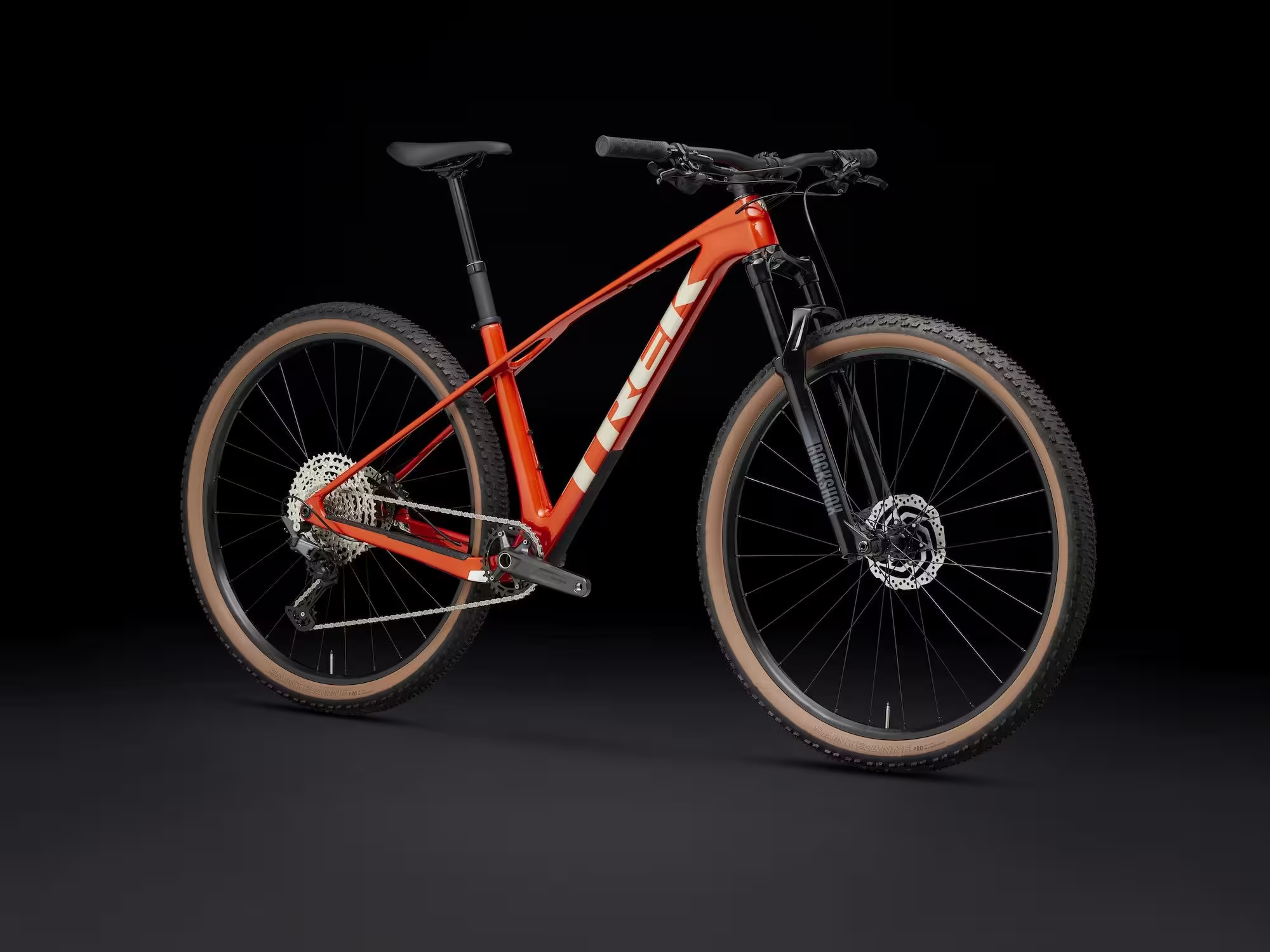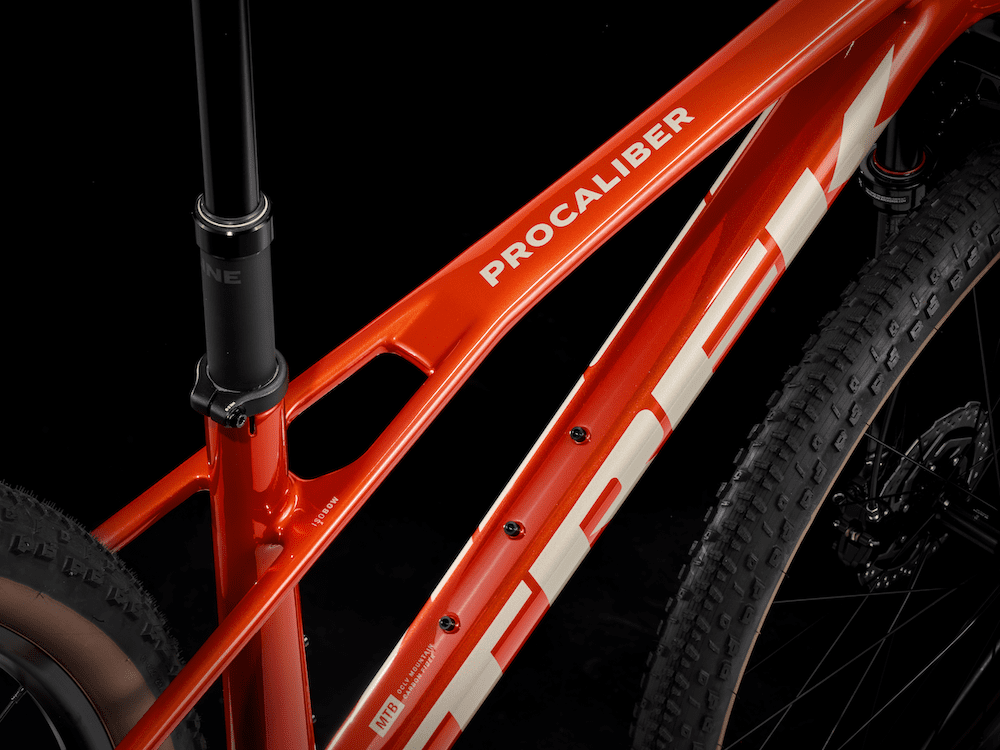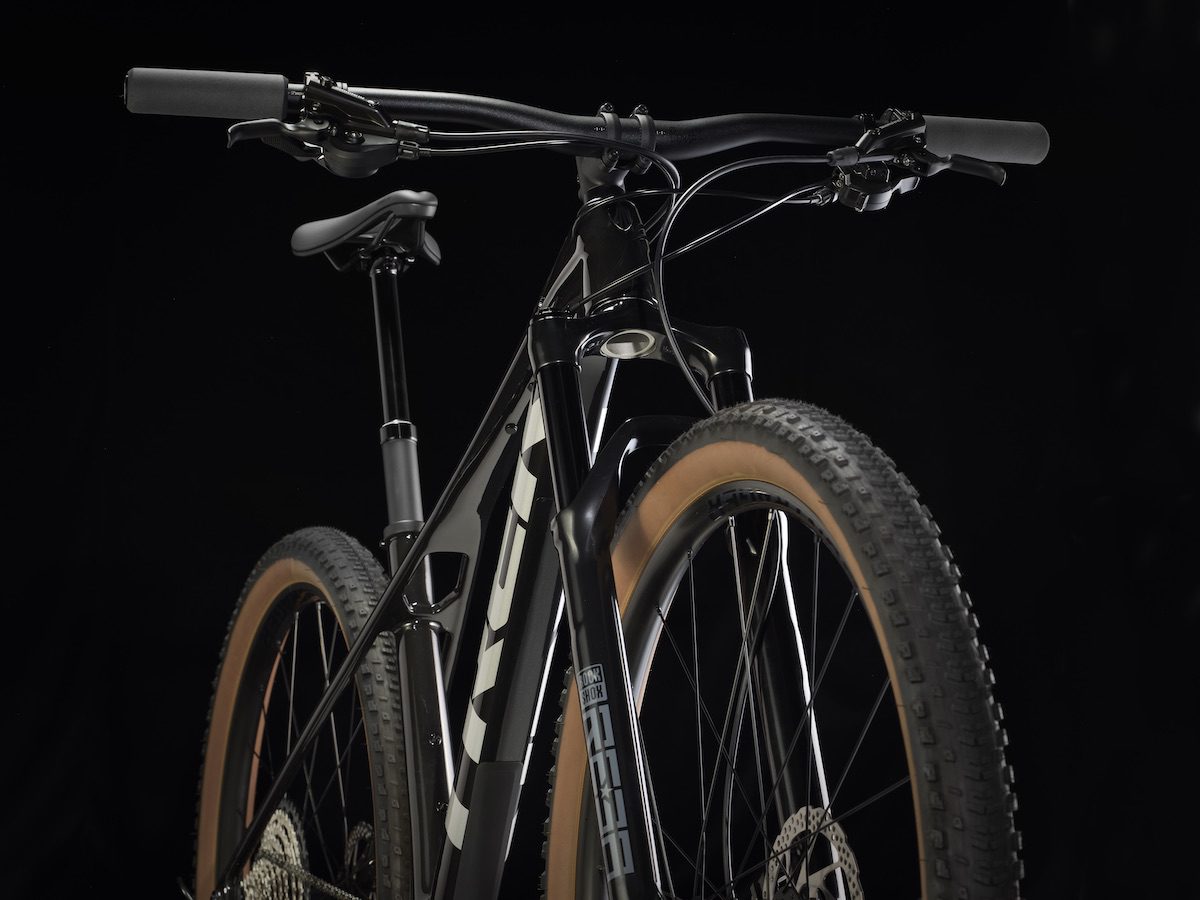Hardtails may not get as much attention as they should, especially in the world of high-end modern race bikes. Heck, even Trek’s taken its own swing at killing the hardtail. But that doesn’t mean the Madison, Wisc. brand is actually leaving the hardtail behind. The new Procaliber sees Trek get creative to elevate its carbon fiber cross country race hardtail.
2024 Trek Procaliber Gen. 3
How does Trek make the Procaliber better? By switching from its distinctive IsoStrut design to the lighter, if slightly less flexier, IsoBow. Trek also updates the Procaliber’s geometry to make this 29″ hardtail a little more capable, and with a little more travel, without sacrificing cross country efficiency and handling.
IsoSpeed vs. IsoBow
IsoSpeed is the design Trek uses that isolates the top of the seat tube from the rest of the frame. That gives it room to flex independently of the frame which, in theory, reduces rider fatigue by transmitting less force through the frame while seated without making power transfer through the pedals less efficient.
IsoBow takes that concept, of allowing the seat tube to flex, and simplifies it. Trek effectively extends the seat stays past the seat tube, joining the top tube in front of the steat tube instead of at it. Trek says IsoBow gives the Procaliber 80 per cent of the compliance IsoSpeed has, but without the complication of moving parts.
IsoBow also helps Trek cut weight. The new frames are, on average, 150 grams lighter than the previous generation. That’s no small number in the hard-fought world of XC hardtails. Trek claims the new Procaliber frame has a painted weight of 1,150g, though they don’t specify what size that is. That gives the 9.5 model a total weight of 12.13 kg (26.75 lbs). Taking the KnockBlock out of the head-tube area probably also helps Trek hit that 150g number, of course.
Another change to the Procaliber frame is the addition of a floating rear brake which, in theory, allows the stays of Trek’s IsoBow design to flex freely.
More travel, still focused on speed
The other major change for the new Procaliber is the move to a 120-mm travel front fork, up from 100mm. That comes with a general shift in geometry to be a bit more capable, including a slacker 67-degree HTA (from 68.8-degrees), longer reach and a steeper STA (74.3-degrees, up from 73.8).
While these changes follow the trends, they keep the Procaliber well within the realm of XC. It keeps a seated position that is…
Click Here to Read the Full Original Article at Canadian Cycling Magazine…



